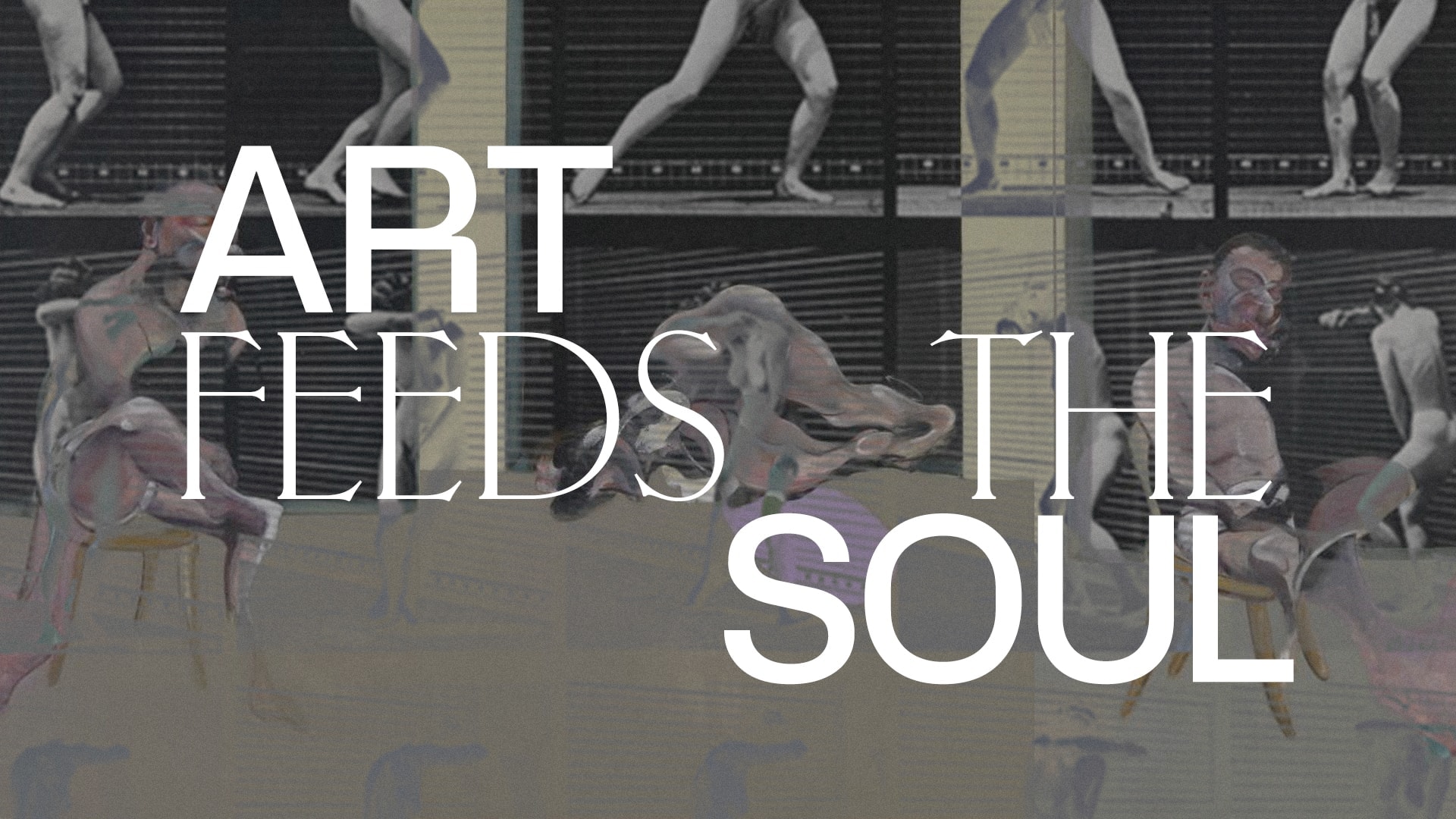
Francis Bacon and his Triptych August 1972 is next in In Art Feeds The Soul, where we examine several pieces of art in permanent collections around London that are not necessarily easy to see, but that may be today’s medicine for our existential needs.
“The emotionally intelligent person knows how to hope and be grateful while remaining steadfast before the essentially tragic structure of existence.” – Alain de Botton.
This leaves little space in a gallery for art that is comfortable and familiar and even less for art that is comforting.
But the challenges of art can themselves be comforting. In this vein, we look at several pieces in permanent collections around London that are not necessarily easy to see but that may be today’s apothecary for our existential needs.
Triptych August 1972 -
Francis Bacon Tate Gallery, London
Purchased 1980
Tryptych August 1972 is not a life-affirming painting. It is not even a cheerful painting. It is a painting that defines the depths of survivor’s guilt, the pain of losing a close one even while acting as though nothing is the matter, but also one that represents the technical zenith of Bacon’s work.
We all know the overused epigram of great art borne from great pain, but it is difficult not to apply this cliche tracing paper over this painting.
We all know the overused epigram of great art being birthed from great pain
It is a painting of Bacon’s lover and muse, George Dyer, a hardened East Ender from a criminal family. In a mythical but oft-repeated story, Bacon and Dyer met while the latter was burglarising Bacon’s studio – and they started a turbulent relationship. Withdrawn and reserved when sober, Dyer was highly animated and aggressive when drunk, and he became increasingly needy and dependent on his older caregiver.
By 1971, he was drinking alone and only in occasional contact with Bacon, who was more or less paying him to be drunk from dawn to dusk. Bacon’s most extensive retrospective in his career took place that October in Paris, and purely as a gesture of respect to the man who featured in so much of his work, Dyer was invited to Paris for the show. Although clean at the time, the pressure of being back in the fore entrained him into an evening of heavy pill and alcohol use.
Bacon and a friend discovered his body, sitting peacefully on the toilet the night before the opening. According to the critic John Russell, Bacon continued with the retrospective and displayed powers of self-control “to which few of us could aspire”. Bacon was deeply affected by the loss of Dyer; from this point, death haunted his life and work. Though outwardly stoic, he was inwardly broken.
The Tate gallery display caption for Triptych–August 1972 reads, “What death has not already consumed seeps incontinently out of the figures as their shadows.”
Bacon was deeply affected by the loss of Dyer, and from this point, death haunted his life and work. Though outwardly stoic, he was inwardly broken.
There are three highly regarded “Black Triptychs”, though two are in private collections, each of which details moments immediately before and after Dyer’s suicide.
Several other characteristics bind them. The shape of a black rendered doorway features centrally in all, and flat and shallow walls frame all. In many, Dyer is stalked by a broad shadow which takes the form of pools of blood or flesh in some panels or the wings of the angel of death in others.
Bacon was helped towards the irrationality of this amalgam by adapting the pose from one of his favourite photographic sources: ‘Some Phases in a Wrestling Match’ from Eadweard Muybridge’s sequential photographs of moving bodies published as The Human Figure in Motion.

Eadweard Muybridge, The Human Figure in Motion, London 1901
The popular association of his work with anguish and debauchery was confirmed when the film director Bernardo Bertolucci used Bacon’s paintings in the opening credits of the controversial and sexually explicit Last Tango in Paris (1972). This film has taken on additional negative weight from the apparent treatment that Marlon Brando subjected his co-star too.
This may be a strange word for a series named ‘Art Feeds the Soul’. But art is as much a personal voyage for him, the artist, as it is a unique feeling for us, the viewer. This is perhaps the most striking example of pain objectified onto a canvas, which is why it is a piece that needs to be seen. We cannot understand true happiness until we understand real pain. This is undoubtedly an excellent place to start.
During the funeral, many of Dyer’s friends, including hardened East End criminals, broke down in tears. As the coffin was lowered into the grave, one friend was overcome and screamed, “you bloody fool!”


